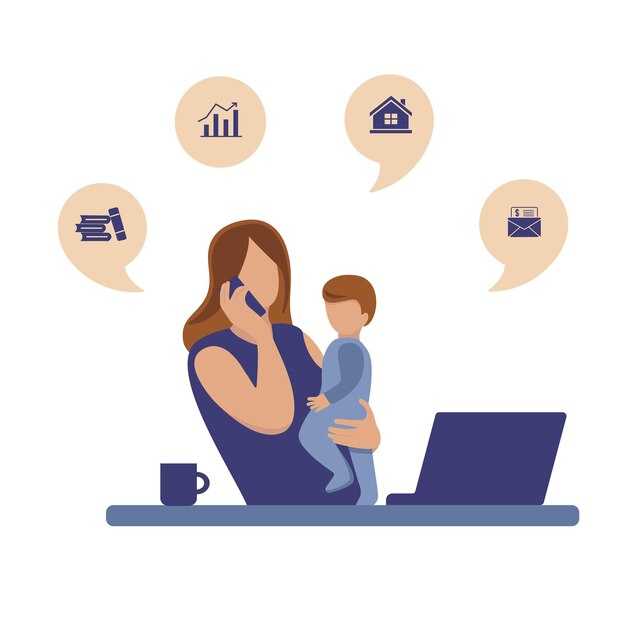I made a video about how tone-deaf it can feel when a man walks in after a half-hour commute and then expects another half hour to decompress before he can switch into husband or parent mode. The most frequent rebuttal I heard was, “But what if someone’s job is incredibly stressful?” In that case, it’s important to remember that being the default caregiver at home with young children is also exhausting and demanding. The point isn’t to keep score of who has it worse — it doesn’t have to be a contest. Most partners don’t want you to claim the stay-at-home role is harder than your paid job; they simply want you to acknowledge that it, too, is very taxing. In healthy partnerships we make space for each other whenever we can. If you’ve had a brutal day at the office, pick up the phone and say, “Hey, I need a minute — today was rough,” and a caring partner should respond, “Take the time you need.” That trust exists because, ordinarily, you show up and participate; your partner depends on that reliability. Conversely, if the person who normally manages the home says, “It’s been a terrible day here,” don’t linger at the office or go out with the guys — come straight home and take over before they reach a breaking point. That’s an act of love. Without singling out men, though, let’s be honest: this doesn’t affect both sexes equally. How many women do you know who arrive home from work and immediately tell their partner, “I had a stressful day; you make dinner, change the baby, and pour me a bourbon while I hide in the study”? The number is small. The solution is simple: when you’re home, be actually present. If you can’t be present, delay coming back. When you have little children who need feeding, bathing, playtime, discipline, cuddles, and bedtime stories, being home in this season means handling those duties. Using work or fatigue as a reason to offload those tasks isn’t a valid excuse — you’re putting in overtime too, and the default parent is exhausted as well.
Here are practical, concrete ways to make this easier and fairer for both partners:
- Make a short arrival plan: Agree on a quick ritual for coming home. For example: “I need 15 minutes to decompress — can you handle dinner setup? I’ll take bedtime.” If a decompression window is needed, negotiate it in advance so it doesn’t become a default dodge.
- Use micro-transition tactics: A five- to ten-minute routine (take off shoes, wash face, drink water, change clothes) can help you shift gears without abandoning responsibilities. Put a timer so it doesn’t expand into an hour.
- Be actually present: Put your phone away, make eye contact, listen, and do a visible task. Even small actions — switching laundry, prepping bottles, reading one story — signal partnership and relieve the mental load that the default parent carries.
- Share explicit duties: Divide predictable tasks (who handles dinner, dishes, bedtime) rather than relying on vague expectations. Swap roles some nights so both partners feel the reality of each other’s work.
- Use scripts: Short phrases reduce friction. Examples: “I can be home by six to start bedtime,” “I need 20 minutes — then I’m all yours,” “I’ll take tonight’s bedtime and story.” Clear language prevents resentment.
- Honor the mental load: Caregiving isn’t just physical tasks; it includes planning, remembering appointments, and emotional labor. Acknowledge it aloud and take responsibility for parts of it (scheduling pediatrician visits, restocking diapers, managing playdate logistics).
- Plan for truly brutal days: If work gets overwhelming regularly, consider longer-term fixes: flexible hours, remote days, a babysitter for a few hours, or support from family. If one partner is consistently depleted, normalizing outside help isn’t a failure — it’s prevention.
- Respect boundaries and reciprocity: If you ask for a minute to decompress, follow through with being present after that minute. If your partner asks for backup because they’re spent, show up immediately. Reliability builds trust.
- Reset at regular intervals: Have weekly check-ins to renegotiate duties and air grievances early, not after resentment has built. Use these conversations to praise what’s working and redistribute tasks when one person is overtaxed.
- When patterns repeat, escalate thoughtfully: If one partner repeatedly refuses to engage or dismisses the other’s fatigue, consider couples counseling or mediated conversations. Persistent imbalance is a relationship issue, not just an individual failing.
- Practice gratitude and small rituals: A quick “thank you” or a mutual 10-minute unwind together can go a long way. Showing appreciation for the default parent’s daily labor reduces defensiveness and increases cooperation.
In short: empathy plus structure. Recognize each other’s weariness, but also build predictable systems so caregiving doesn’t fall solely on one person because someone “needed” to decompress. Being a partner means sometimes choosing presence over escape — and having your partner do the same for you. That reciprocity is what keeps both people from breaking.
Customizing Photomat Output: Examples, Tips, and Troubleshooting

Use photomat process input/*.CR2 --format=jpeg --quality=85 --resize=1920x1080 --output-dir=out for a balanced tradeoff: expect ~40–60% smaller file size versus quality=100 on typical DSLR RAWs while preserving visible detail.
Prefer precise resize and crop controls when target dimensions matter: --resize-fit=1920x1080 preserves aspect ratio; --crop=1920x1080 --anchor=center --interpolation=lanczos yields pixel-accurate frames for thumbnails or responsive images. Use --resize-strip for exact downscales that avoid upscaling.
Choose output formats by distribution channel: use JPEG for universal browser support (--quality=80–90), WebP for smaller sizes with comparable quality (--format=webp --quality=80 typically beats JPEG 85 by ~20–30% on photos), and PNG for lossless graphic elements. For images with transparency use WebP or PNG; for photographic archives prefer TIFF with --compression=lzw.
Keep colors consistent by converting and embedding an ICC profile: --convert-profile=sRGB --embed-icc. Verify with exiftool -ColorSpace out/image.jpg. If you see “unsupported color profile” errors, run photomat process --convert-profile=sRGB input/file or pre-convert with ImageMagick: magick input.tif -colorspace sRGB output.tif.
Control metadata: strip sensitive fields with --strip-metadata=GPS,Comments or preserve EXIF with --preserve-metadata=all. Stripping metadata often saves 1–40 KB per file depending on camera and embedded previews. Confirm with exiftool out/file.jpg.
Optimize throughput by matching --threads to hardware: set threads to CPU cores minus one (for example, --threads=7 on an 8-core machine) and use --batch-size=50 to avoid memory pressure. If processing large RAW batches on machines with 8 GB RAM, try --threads=2 --batch-size=20 to prevent swapping.
Troubleshoot common errors: “Error: out of memory” – reduce --threads nebo --batch-size, add swap, or enable --tile-processing; “Error: unsupported color profile” – add --convert-profile=sRGB; missing output files – check write permissions and confirm --output-dir exists. Inspect runtime logs at ~/.photomat/log/photomat.log or run photomat --log-level=debug for verbose traces.
Automate safe reprocessing: add --skip-existing to avoid duplicates, or use --resume after interrupted runs. Force overwrite with --force when you need deterministic output. Use checksums to detect changes: photomat process --checksum=md5.
Validate results with these commands: check dimensions and format with ImageMagick: identify -format "%f: %w x %h, %m; verify metadata with
" out/*.jpgexiftool out/file.jpg; compare file sizes with du -h out/ | sort -h | tail -n 10.
Quick practical checklist: set --format a --quality based on destination; convert to sRGB and embed ICC for web; choose --threads according to RAM and cores; strip GPS/EXIF for privacy; enable --skip-existing for idempotent batches; enable debug logs when a run fails.


 Only the default parent will understand.">
Only the default parent will understand.">

 6 Relationship RULES that CHANGED Everything">
6 Relationship RULES that CHANGED Everything">
 Wife finds another "Sale"">
Wife finds another "Sale"">
 The Real Reason It’s So Hard to Recover from Childhood PTSD">
The Real Reason It’s So Hard to Recover from Childhood PTSD">
 Should I break up with him?">
Should I break up with him?">
 7 Habits That Easily Re-Ignited Her Arousal">
7 Habits That Easily Re-Ignited Her Arousal">
 Is your Wife Addicted to Plants?">
Is your Wife Addicted to Plants?">
 10 Emotional Regulation Strategies for Everyday Life">
10 Emotional Regulation Strategies for Everyday Life">

 CPTSD Makes You Yearn for Closeness, But FEAR It (3-Video Compilation)">
CPTSD Makes You Yearn for Closeness, But FEAR It (3-Video Compilation)">
 When is it OK to Lie to our Partners?">
When is it OK to Lie to our Partners?">